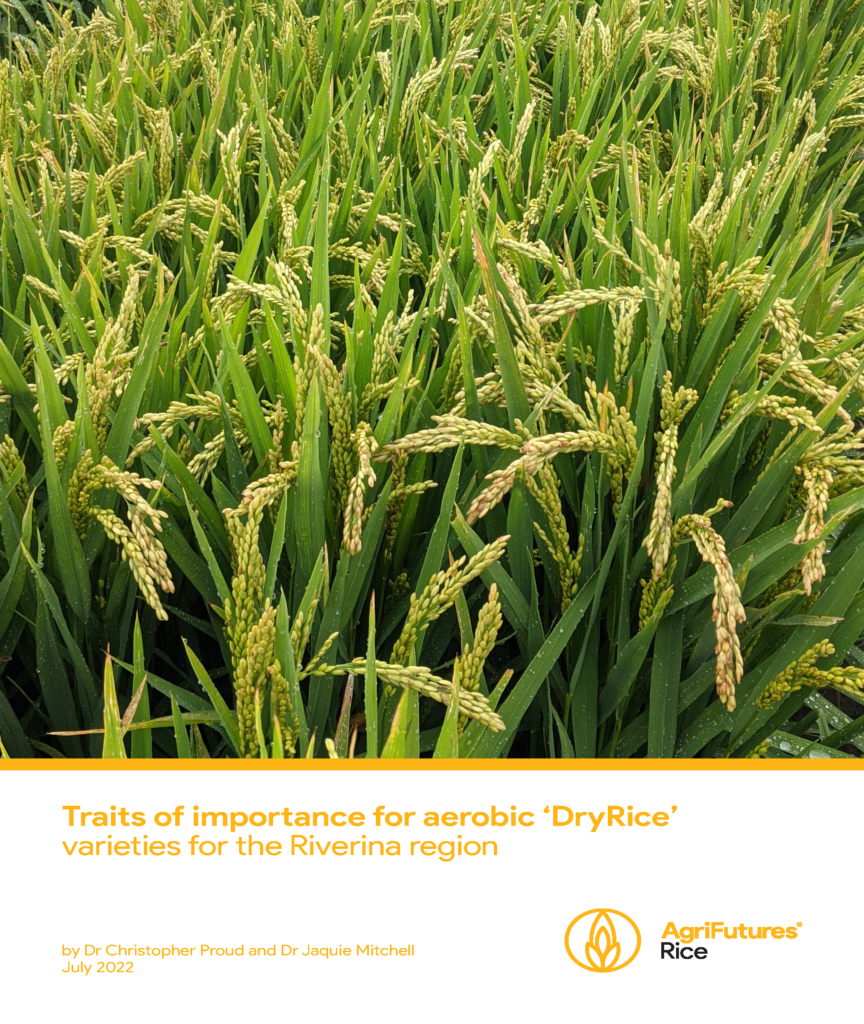The Australian rice industry has a water use efficiency target of 1.5 t/ML as production is challenged by water availability and high costs. Aerobic ‘DryRice’ production is a high-input, drill-sown method that forgoes permanent water. Global research has demonstrated an average 50% improvement in water productivity under aerobic conditions, however the impact on water productivity in Australia is unknown. Aerobic rice production in this country is an emerging system and varieties have not been developed for the southern Australian production environment. There has been little research conducted on the specific adaptations and underlying physiological requirements of aerobic varieties. Additionally, removing deep permanent water will make rice more susceptible to cold temperature injury, particularly at the young microspore stage, requiring improved tolerance.
This project aimed to identify the physiological traits associated with high-yielding aerobic production, identify potential donor varieties, and develop tools to aid the Australian rice breeding program in developing aerobically adapted varieties. In addition, the project aimed to understand the current agronomic limitation to the adoption of aerobic production.
The research identified multiple traits contributing to yield under aerobic production conditions. Phenotyping methods were established and the benefits of deep root architecture and maintaining high stomatal conductance were validated. Multiple donor varieties for yield, root cone angle/deep root architecture, stomatal conductance, mesocotyl length and cold tolerance were validated and have subsequently been incorporated into the rice breeding program.
Furthermore, genomic regions were identified for root cone angle, cold tolerance and mesocotyl length. Breeding efficiencies can be improved by using the robust marker assays provided to the rice breeding program for root cone angle and cold tolerance.
Agronomic experiments provided the foundational knowledge to develop a management practice for high-yielding, water-productive aerobic rice. The results of the numerous experiments conducted at Gatton, and their contribution to increased knowledge and scientific outputs, demonstrate that Gatton can be used as a ‘DryRice’ pre-breeding and research site for improved productivity for the target production environments.
New germplasm originating from the project is likely to offer additional cold tolerance, lower production risk and increase water use efficiency across a range of grain quality types. This will have a direct, positive impact at the farmgate of Australian rice growers and flow-on effects to the industry and the wider Riverina community.





